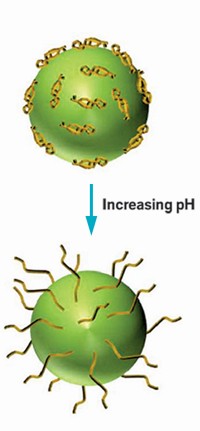Advertisement
Grab your lab coat. Let's get started
Welcome!
Welcome!
Create an account below to get 6 C&EN articles per month, receive newsletters and more - all free.
It seems this is your first time logging in online. Please enter the following information to continue.
As an ACS member you automatically get access to this site. All we need is few more details to create your reading experience.
Not you? Sign in with a different account.
Not you? Sign in with a different account.
ERROR 1
ERROR 1
ERROR 2
ERROR 2
ERROR 2
ERROR 2
ERROR 2
Password and Confirm password must match.
If you have an ACS member number, please enter it here so we can link this account to your membership. (optional)
ERROR 2
ACS values your privacy. By submitting your information, you are gaining access to C&EN and subscribing to our weekly newsletter. We use the information you provide to make your reading experience better, and we will never sell your data to third party members.
Materials
Manipulating Polymers’ Molecular Weight Distribution
Synthesis approach can help tune polymer properties
by Jyllian Kemsley
February 26, 2016
| A version of this story appeared in
Volume 94, Issue 8
A typical polymer sample contains a variety of chain sizes. The average molecular weight of these chains, as well as the breadth and shape of their distribution, can influence bulk polymer properties. Adjusting how quickly a polymerization initiator is added can help tune that distribution, report Dillon T. Gentekos, Lauren N. Dupuis, and Brett P. Fors of Cornell University (J. Am. Chem. Soc. 2016, DOI: 10.1021/jacs.5b13565). Working with polymerization of styrene initiated by an alkyl nitroxide, the team added the initiator in various ways. Compared with adding the initiator all at once, adding it steadily over as long as two-and-a-half hours broadened the polystyrene molecular weight distribution: The width increased for longer addition times, but the average chain length stayed the same. Adding the initiator at an increasing rate shifted the shape of the distribution curve, indicating a greater proportion of chains with lower molecular weight. And adding the initiator in two distinct doses created a bimodal distribution. “This approach is applicable to any controlled polymerization that uses a discrete initiator, and it allows the use of molecular weight distribution composition as a parameter to tune material properties,” the researchers write.





Join the conversation
Contact the reporter
Submit a Letter to the Editor for publication
Engage with us on Twitter